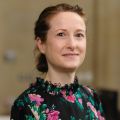Establishing cultural provision for South Asian older adults with cognitive impairment: Persevering through challenges and successes
In this blog Stephanie Tierney reports on meeting with staff from a museum in North East England about developing and offering provision for older people from a South Asian background with cognitive impairment.

Beamish Museum is an open-air venue in County Durham, England. It offers visitors the opportunity to step back into the past and to experience life from the 1800s-1950s. Michelle Kindleysides (Head of Health and Wellbeing), Beth Marston and Catherine Appleby (Health and Wellbeing Support Workers) talked to me about trying to engage with older people from a South Asian background with cognitive impairment. They reflected on learning from this work (which was funded by Historic England). Their thoughts were useful for and related to the TOUS study (Tailoring cultural offers with and for diverse older users of social prescribing) we are undertaking.
Capacity to create connections
The team noted how engaging with diverse communities takes time, adding that making links with established groups, organisations or individuals who can act as a bridge – in this case to older people from a South Asian background – is essential. Such work involved going to events that South Asian communities were likely to attend (e.g. Mela) and having intermediaries known to the community to facilitate introductions, who could act as a ‘guarantor’ or ‘referee’ for the museum and its staff. Some false starts were recalled, with one organisation that seemed interested at first in supporting the team’s aim not engaging with older people from a South Asian background with cognitive impairment; however, they were able to connect the team to other, more relevant community contacts. Another organisation had likewise been enthusiastic about supporting the team from Beamish Museum but then, due to financial pressures, some of the groups they ran folded and the person who was the key contact moved on to other activities.
Getting people to beamish museum
As a result of the connecting endeavours outlined above, a VIP event at Beamish Museum was run, targeted at people from within the South Asian community within South Shields. It had 40 attendees. Transport was organised, as were activities that would be familiar and attractive to people from this community (e.g. dance, music, traditional storytelling and film footage relating to India in the mid-20th Century). The museum at this event was used as a unique performance space to celebrate the diverse heritage of the region.
Moving forwards in incremental steps
The team tried to build on this event by organising taster sessions. To make these accessible, they used a venue in South Shields rather than Beamish Museum; the hope was that eventually, as people became familiar with the team, they would be willing to travel to Beamish. The plan was to focus on a part of South Shields with a high level of Bangladeshi residents; activities were prepared to encourage people to share their experiences, using artefacts, photos, videos from the 1950s to prompt discussion and storytelling. Music and movement were also planned to encourage people to express recollections of time gone by. Attendance at the first of these Monday sessions was low. Therefore, the team amended its plans and, instead, sought to target individuals training to be care workers from an organisation supporting women from a South Asian background; at these sessions, attendees were going to be encouraged to think about the positive effects of creativity for older people, especially those with a cognitive impairment. These sessions were also not well attended. However, more positively, the team has started to work with a group of Bangladeshi women, all over 55 years old. Team members are hopeful that this connection will flourish over the coming months, allowing the group to incorporate their own stories into movement, to support physical and mental health and wellbeing, and sense of identity, specifically in relation to ageing. Funding for this project will end in May 2025, at which point a celebration event will be held at Beamish Museum.
Learning points for the team from this work
Here are some key learning points that the team described from this engagement project:
- Engaging with a specific community (in this case, older people from a South Asian background) was a longer process than anticipated, with hurdles along the way.
- Finding out the best ways to communicate with communities is important. This may mean not relying on traditional means (e.g. using WhatsApp rather than emails) and connecting with groups, organisations or individuals who can communicate activities being organised by museum staff.
- Running such engagement work alongside other projects can be difficult as it is not possible to give it full attention; arranging Teams chat with different partners, in particular, can be challenging.
- Going out to community events and settings is essential.
- Evaluation cannot necessarily be planned until it is clear what groups will be involved; this will inform what to focus on in the evaluation and what approach to take to data collection.
To find out more about this work, please contact Michelle Kindleysides - Head of Health and Wellbeing at Beamish Museum (MichelleKindleysides@beamish.org.uk).
What to read next
Shaping inclusive cultural offers: Reflections from our knowledge exchange event
24 September 2024
In this blog, Jordan Gorenberg reflects on a knowledge exchange event held as part of the TOUS study.
Developing a social prescribing programme for older people from diverse communities: Experiences in Leicester
19 April 2024
In this blog, Stephanie Tierney reflects on a meeting she had about work being undertaken in Leicester to reach and engage with older people as part of social prescribing.


